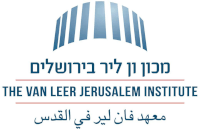In his book “Minorities at Risk”(1993), Ted Gurr, one of the leading researchers of political conflicts, reviews 230 minority groups throughout the world. Gurr concludes that a minority has three strategic choices: nonviolent struggle; violent struggle; and revolution, coup or civil disobedience. As opposed to the two kinds of struggle, whose purpose is to put pressure on decision-makers to change policy so that it favor the minority, the purpose of revolution is to fundamentally change the regime and power relations between the groups. When there is a strong external element that intervenes in favor of the minority, the minority increases its demands. On the other hand, a minority that does not enjoy such support or is supported by a weak party, will suffer from political inferiority and adjust to the majority’s policy of oppression. The quality of the democracy also has a direct impact on the demands of the minority.
In this article I will argue that the way to realize the goals of the Palestinian minority in Israel is a deep Jewish-Arab partnership, and that the last three election cycles made a big contribution to that. The demands of the Palestinian minority in Israel are the third kind of demands: revolution, and the only strategy available to them is the strategy of nonviolent struggle. Furthermore, they are not supported by a strong external element intervening on their behalf, nor does Israel have a particularly good democracy as far as its treatment of minorities. In order for the Palestinians in Israel to realize their political demands, which include a fundamental change in the regime and power relations between the groups, a formula must be offered in which both sides stand to gain. Therefore, a discourse of common interests must be adopted rather than a moralistic discourse that talks about historic justice, in which one side goes back 100 years and the other side goes back 2000 years.
A discourse of common interests can be created on the basis of a deep political partnership between Jews and Arabs, one where recognition of the other side’s narrative is the interest of each side. Genuine political partnership would lead to conciliation between the two peoples, based on an Israeli recognition of the nakba as an event for which it bears primary responsibility, and therefore carries the responsibility for its historic reparation; and on the other hand, Palestinian recognition of the Jewish right to self-definition in the State of Israel, which would contribute to alleviating the fear of the Jewish side, which is exploited by many populists for motives that are the opposite both of democracy and of many of the principles that are important to the Jewish majority in Israel.
When political change occurs and the system moves from point 0 to point 1, it does not go back to the starting point even if there is a change of government, but will continue to move forward. We can find examples of this in every political system, whether local or international. For example, in the context of the relationship between the state and the Palestinians in Israel, after the second Rabin government approved in 1992 a plan to close gaps between Jews and Arabs, almost every government that has followed has boasted such a plan. The latest was Decision No. 922, approved by the fourth Netanyahu government on the last day of 2015, and it is likely that the fifth Netanyahu government will develop and approve a new plan on the same lines. Usually, the distance between point 0 and point 1 is short; political change is usually a process comprised of small steps, and not one big step. Occasionally there is a decisive (or critical) intersection, special moments that lead to a critical institutional change and a “ramification point from which historic development moves on to a new track,” as Peter Hall and Rosemary Taylor argued (1996). Such events occured twice in the years 1992-1995, one when Rabin made an alliance with the Arabs and the other when Rabin was assassinated. The first event gave legitimacy to the Arab vote and the political weight of the Arabs, which made it possible to lead historic processes. The second took away that legitimacy, and this contributed to stopping those historic processes.

The step that Benny Ganz failed to take in March 2020, when he turned his back on the bloc that recommended him, and joined Netanyahu, could have been a “critical historic intersection.” It is likely that it would have shortened the way towards establishing a deep political partnership, moved the entire political system onto a new track, and created new opportunities for shared living. But it also clarified to those interested in partnership that there are no shortcuts and a long process is needed, one step at a time and one brick at a time, to build the desired partnership and strengthen it against its numerous opponents. The great change towards partnership is the product of a process and not of one small step.
But still there is change. According to the neo-establishment approach, one of the factors that allows change is discourse – an interactive process of transmitting ideas. Ideas are the essential contents of the discourse but not the entire discourse; it also includes the interactive processes through which the ideas are conveyed. The three cycles of elections for the Knesset between April 2019 and March 2020 sharpened the exclusion discourse towards the Arabs, including very dangerous ideas for democracy. At the same time they brought to center stage the influence discourse, including ideas of partnership. The processes these ideas went through created new supporters for the partnership idea. Thus, the influence discourse – comprised of partnership ideas – underwent an intensive process in the three election cycles and created a reality of partnership: Political commentators in the Jewish majority’s conservative mainstream media took into account the representatives of the Joint List when they presented the public with the possible candidates for compiling the government, and even candidates for parties that did not necessarily historically support partnership with the Arabs in the government talked about it without hesitation. The mainstream newsmagazines and newspaper headlines also discussed incessantly the positions of the different political players regarding the Joint List’s participation in the coalition or its support from the outside as an obstructive bloc.
In the not-so-distant past no such discourse existed, and even in the April 2019 elections it was not very visible. But it received legitimacy with the reestablishment of the Joint List ahead of the September 2019 elections, and intensified ahead of the March 2020 elections. Thus, the election year between April 2019 and March 2020 generated the political participation process and the ideological expression of the influence discourse. From here there is apparently no going back to the starting point; the representatives of the Arab public can no longer be ignored. Thus, the way to partnership has become the way to essential government change in Israel.















